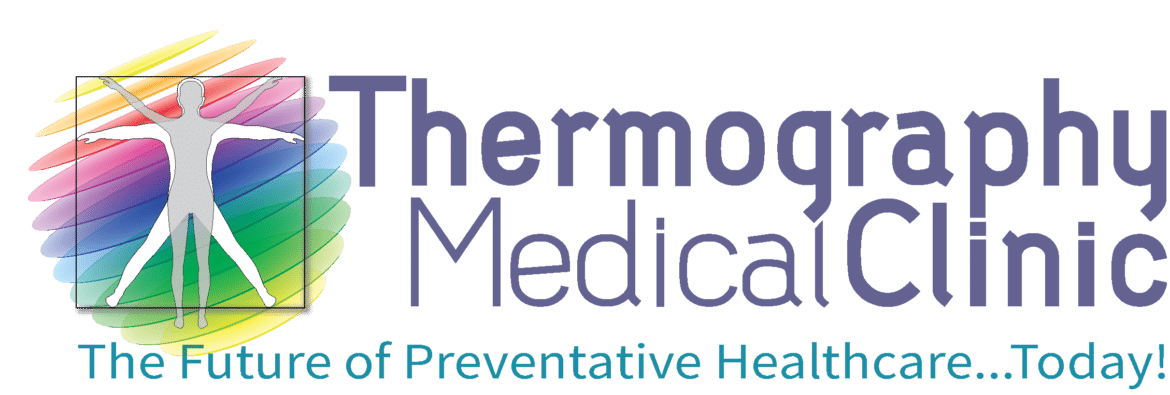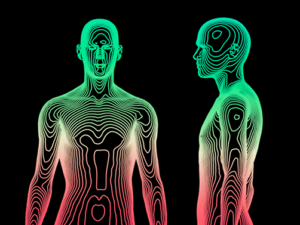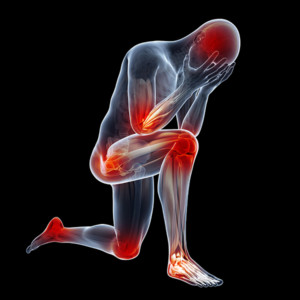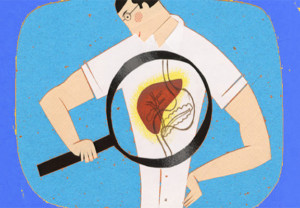What is Thermography?
Thermography is a non-contact, non-invasive procedure which captures and records temperature variations on the skin. The skin is the body’s most intelligent organ and is “wired” with a communication network connecting all other organs and physiological processes in the body. The skin responds to physiological changes and a thermography device observes those changes.
The unique contribution of thermography is that it shows physiological and metabolic processes. By comparison, tests such as ultrasound, x-ray and mammography show the body’s structure or anatomy looking for structural changes. By looking at how the body is functioning and by helping to identify what is stressing the body, thermography provides unique information that your health practitioner may use along with other tests to evaluate your health.
Clinically, thermography is a test of physiology that relies on the sympathetic nerve control of skin blood flow and the ability of the sympathetic nervous system to respond to and react to pain, pathology, injury or dysfunction anywhere in the body. Inflammatory response and inflammation-associated diseases, which create a thermal pattern, visually detected with thermography, is globally recognized as the number one health issue in the world. There is mounting evidence to support these statements:
Inflammatory Responses and Inflammation-Associated Diseases in Organs
Why You Should Pay Attention to Chronic Inflammation
Thermography is playing an increasing role in health assessment and as a method of assisting in monitoring the effects of treatment.
By using the most advanced infra-red cameras and our patented image capture and analytical software, Thermography Medical Clinic staff can accurately measure the temperature at every single point of the human body. The role of body temperature as a very good indicator of health and wellness has been known since the time of Hippocrates, as changes of just a few degrees on skin (cutaneous or superficial) can be used as an indicator of inflammation and possible illness.
At Thermography Medical Clinic, we call thermography a “Health Discovery Tool” and we consider it to be a very important part of a preventive wellness program.
Role of Prevention
An ounce of prevention is worth a pound of cure. Humans are notorious for waiting until symptoms get so bad they finally act on them. At that point, there is probably little opportunity for Prevention – only Reaction – leaving no choice but to endure invasive testing, drugs with side effects, treatments and surgeries that tend to have a negative impact on the quality of life.
However on the Proactive side, trained practitioners can use the findings of a thermography study to motivate their patients to be proactive and can help to support the body’s ability to heal itself through various modalities such as diet changes, supplementation, acupuncture, chiropractic, massage, exercise and more… All designed to return the person to a healthier state of well-being.
Health Discovery Tool
As a Health Discovery Tool, thermography has many advantages over other technologies, including:
- as a non-contact technique, it is painless and accurate (because it does not affect the measurement);
- it has no harmful radiation (such as mammography and x-ray imaging);
- as a non-invasive technique, it is suitable for prolonged and repeated use (as necessary for intensive monitoring and higher accuracy); and
- by generating a two-dimensional image, it makes comparison between different areas possible (which broadens its applicability as a health discovery tool because the human body, when healthy, tends to be symmetrical in temperature regions).
What Can Infrared Imaging See?
Blood Perfusion
Thermal Imaging is a technology that measures body temperature extremely accurately. The circulatory system is a supply line, delivering everything that the body needs to function efficiently. It is in constant metabolic movement – warming, oxygenating, carrying nutrients to every organ, removing waste, protecting and healing, and stabilizing the body’s temperature.
When the body needs healing, the system increases the flow of blood to the site – creating heat. If a specific organ is in distress, even mild distress, blood will be automatically re-directed from the surface to supply extra nutrients to the organ. This creates a cooler area on the skin. Because there is a map of the area of the skin that is directly related to each specific organ, thermography allows us to identify the source of the potential problem. On its own, thermography is not diagnostic for any specific disease, but it can alert us to regions and conditions which need further investigation—it prioritizes areas which should be examined.
So patterns, whether they represent expected, warmer or cooler temperatures, are valuable information to practitioners knowledgeable about thermal physiology.
Injury
Thermography has great potential to assess injury and to prevent serious injury for athletes and non-athletes. Increased blood perfusion, which is a functional response to injury, can alert the patient, trainer or physician to a potential major problem (if it is not addressed before the injury becomes a major issue). Thermography is the best technology to measure the resulting changes in heat and localized temperatures.
In sports medicine, thermography has been applied in injury prevention and in monitoring muscle recovery after exercise. Since muscle injuries trigger inflammatory processes which generate heat, the level and source of inflammation can be measured by evaluating the resulting temperature differences and vascular patterns in thermal images. For human athletes, overuse reactions are frequent, and the early detection and localization of inflammation is a critical step in determining the appropriate treatment, including identification of the source of cases of referred pain. In veterinary medicine, thermography has been used to detect locomotion injuries in racehorses and to monitor their health status.
Metabolic Changes
The skin not only protects us from the outside world, but it is a functioning endocrine organ on its own! It produces all hormones and communicates with all organs and biologic processes in the body. How perfect that we are observing the skin and its response to hormonal and other endocrine processes. It is the body’s ultimate communication with the outside world, all there for us to observe with our infrared camera!





